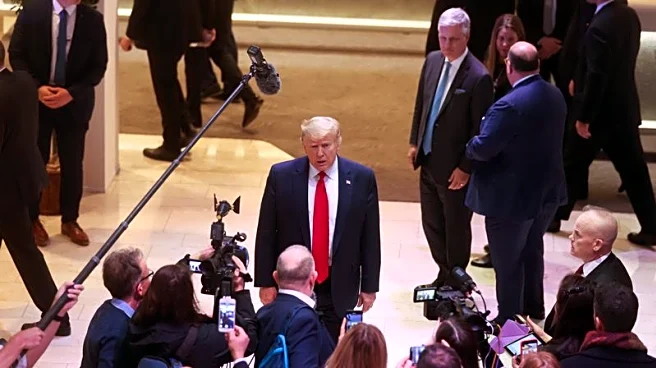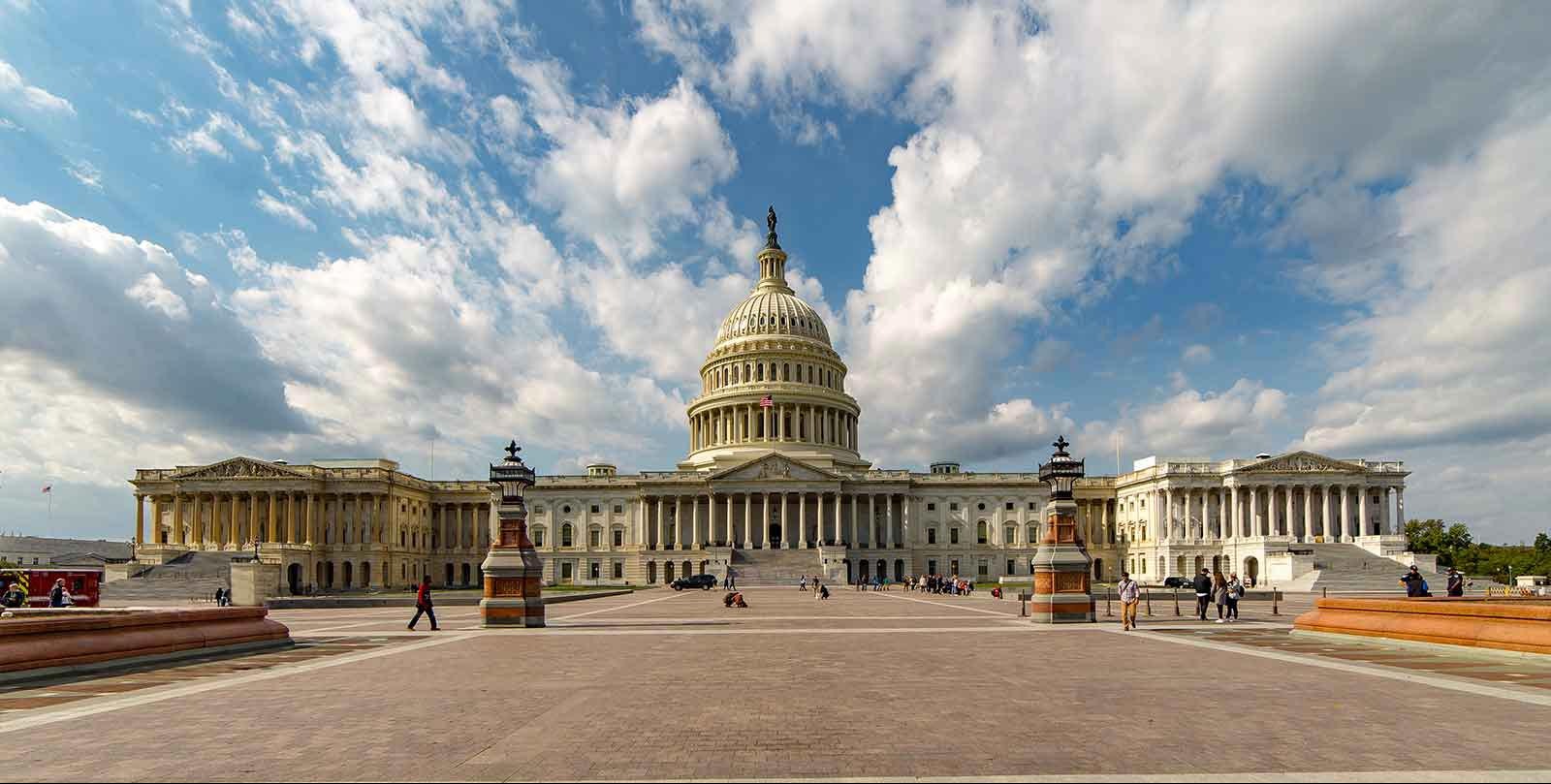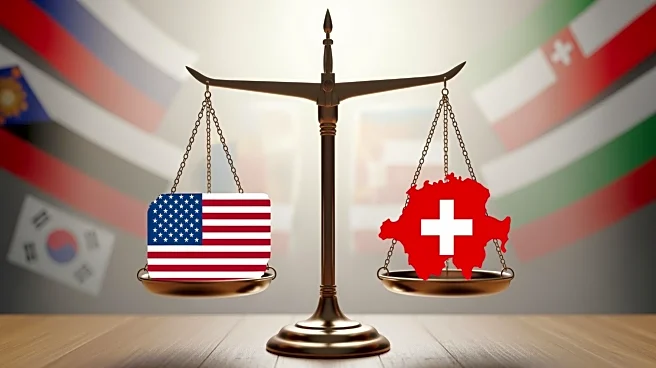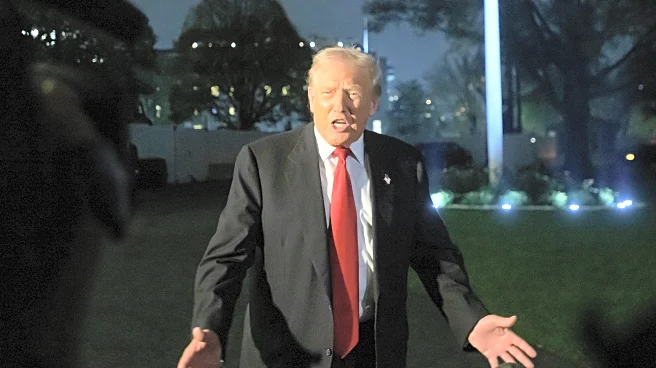What's Happening?
The United States and Switzerland have reached a significant agreement to reduce tariffs, as announced by officials from both countries. The deal, which is set to be detailed soon, aims to lower the tariffs imposed
by President Trump earlier this year. The agreement was reached following discussions in Washington, where Switzerland's economy minister, Guy Parmelin, sought to ease the steep duties. U.S. Trade Representative Jamieson Greer confirmed the deal, stating that details would be posted on the White House website. The Swiss government announced that U.S. tariffs would be reduced from 39 percent to 15 percent. This development comes after President Trump imposed high tariffs on Swiss imports, affecting various sectors including pharmaceuticals, gold smelting, and railway equipment.
Why It's Important?
The reduction in tariffs is crucial for Swiss industries, particularly those heavily reliant on exports such as watchmaking, industrial machinery, chocolate, and cheese. The agreement provides temporary relief to these sectors, which were at risk due to the high tariff rates. Swissmem, the association representing the mechanical and electrical engineering industry, expressed cautious relief, noting that while the reduction is beneficial, there is a need for continued efforts to open new markets and reduce costs. The deal also aligns Switzerland's tariff levels with those negotiated by other wealthy economies like the European Union and Japan, potentially leveling the playing field for Swiss businesses.
What's Next?
The Swiss government has scheduled a news conference to provide more details about the agreement. Swiss businesses are expected to continue advocating for further tariff reductions and market access. The temporary relief offered by the current agreement may prompt Swiss industries to strategize on long-term solutions to mitigate the impact of potential future tariffs. Additionally, the U.S. may see an increase in Swiss manufacturing investments, as companies look to relocate production to avoid tariffs.
Beyond the Headlines
The agreement highlights the broader implications of trade policies under President Trump, which have affected global trade dynamics. The high tariffs imposed by the U.S. have prompted countries to seek negotiations to protect their industries. This development underscores the importance of diplomatic engagement in resolving trade disputes and maintaining economic stability.













